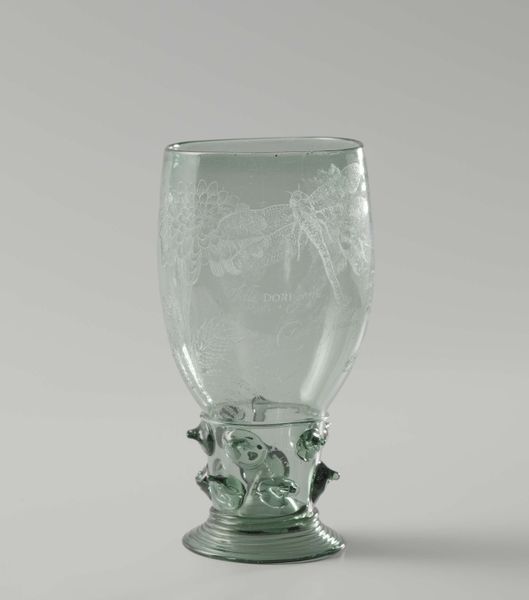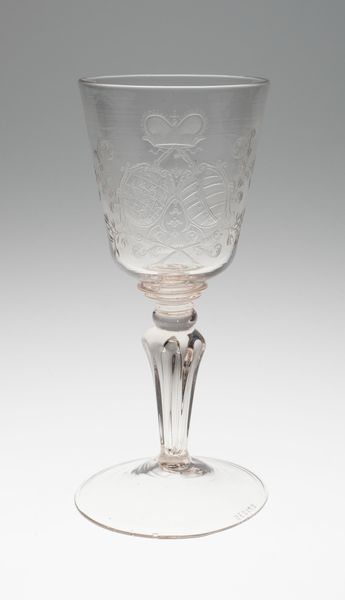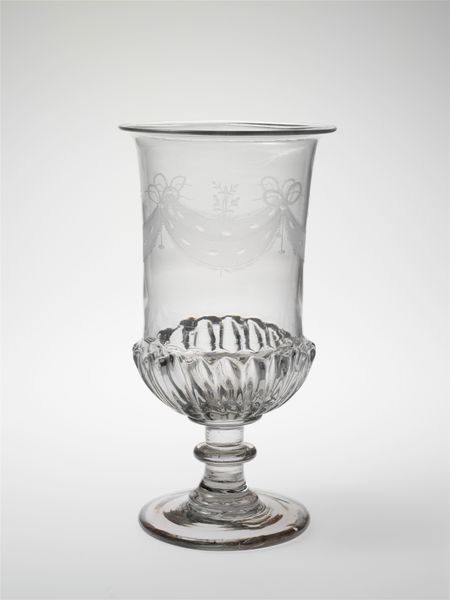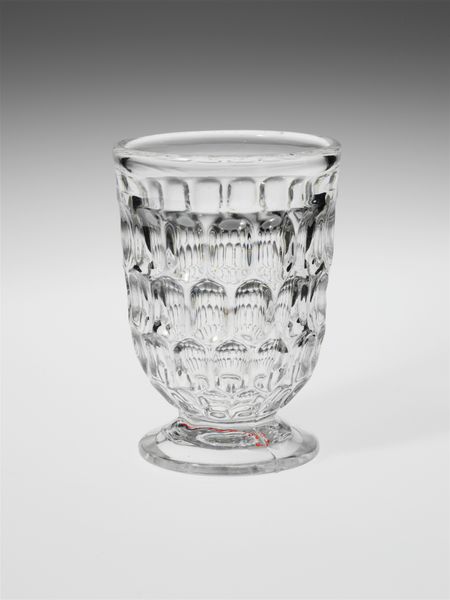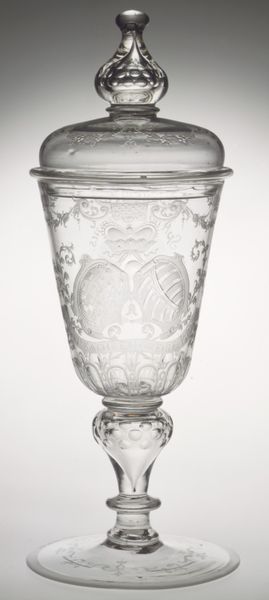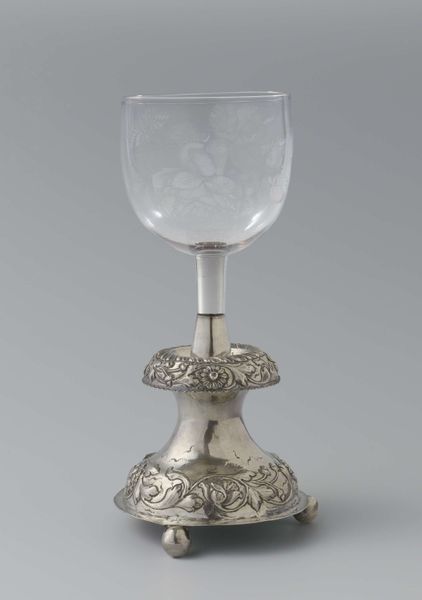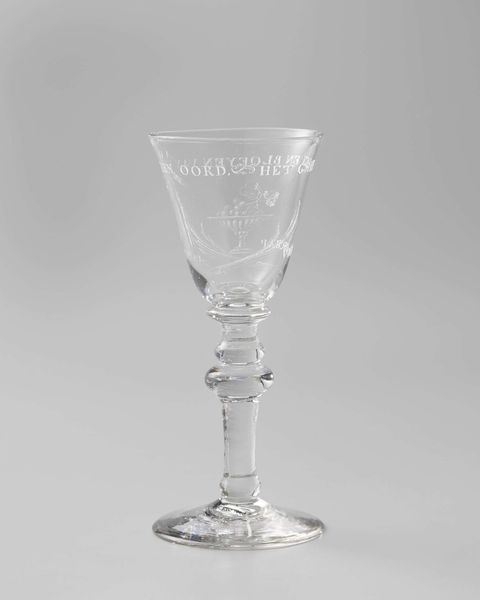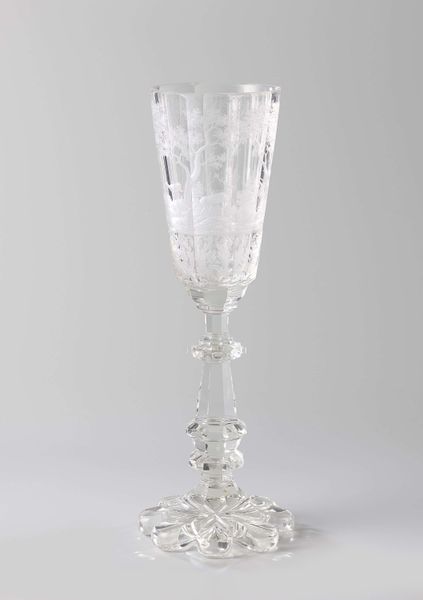
Roemer met het wapen van prins Maurits en het opschrift: TANDEM.FIT. SVRCULUS ARBOR 1606
0:00
0:00
anonymous
Rijksmuseum
ceramic, glass
#
baroque
#
ceramic
#
glass
#
stoneware
#
ceramic
Dimensions: height 23.4 cm, diameter 15.6 cm
Copyright: Rijks Museum: Open Domain
Curator: Here we have a "Roemer" made in 1606; this example resides in the collection of the Rijksmuseum. The glass is engraved with the coat of arms of Prince Maurits, along with the inscription "TANDEM.FIT.SVRCULUS ARBOR." Editor: It has an intriguing aesthetic! The delicate blue-tinted glass contrasts with the assertive, almost prickly texture of the base. It speaks to the tensions of power and fragility within the Dutch Republic at the time, don't you think? Curator: I believe you're spot on. This roemer tells us a lot about the political climate during the early 17th century, often referred to as the Dutch Golden Age. Prince Maurits, a pivotal figure in the Dutch Revolt against Spanish rule, used imagery to reinforce his power and legitimacy. The coat of arms and inscription served as potent symbols in asserting his family’s authority. Editor: Exactly! Considering the rising merchant class and social mobility of the era, it's fascinating how Maurits still leverages heraldry. This piece becomes a carefully constructed object of propaganda. Were these roemers only commissioned by the elite? Or did they find their way into wider circulation? The materiality would dictate it was probably expensive, right? Curator: The production of such roemers was definitely tailored for an elite clientele, including military officers and government officials, although less ornate versions of roemers became common amongst many strata in the Netherlands. It played a performative role at political banquets and toasts to showcase allegiance. So, we're witnessing both artistry and a savvy deployment of visual politics. The use of clear, expensive glass signals both wealth and status, important for shoring up power after years of war. Editor: A clear sign of burgeoning power then. It also reveals the embedded nature of power; it’s quite literal in that it's part of everyday life through toasting and social engagement. It really makes one think about the symbolism inherent in material culture and how objects construct and reinforce our perception of reality and influence relations. Curator: Precisely, and while anonymous, the creator cleverly wove art and authority, reminding us how art participates in the narrative of history. Editor: And for me, this artwork demonstrates how potent the domestic space becomes as a location for understanding intersectional power. I feel encouraged to re-examine even the everyday objects of our current material landscape through this politicized lens.
Comments
No comments
Be the first to comment and join the conversation on the ultimate creative platform.
